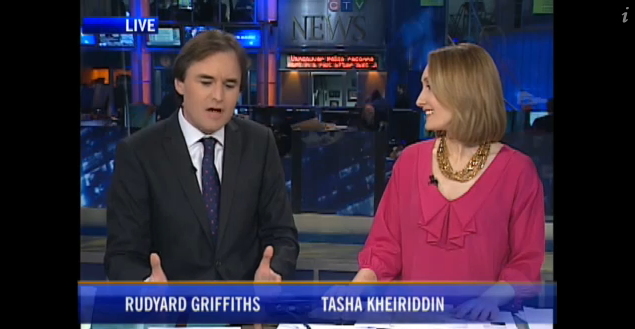#170) This is why the climate world needs Joe Romm
November 4th, 2011
Communication is about substance AND style. Here’s yet another TV debate with Marc Morano. This time his opponent is so soft and friendly that you can’t help but think none of these issues are very important any more. Which I don’t think is quite true given yesterday’s grim news on carbon emissions.
YOU EGG-FACED SCIENTISTS. Marc Morano provides his litany of examples of “global warming distortion” (ways he feels the science and environmental communities have misled the public) underscoring it with an, “Everything from …” itemization. Which is fine — it’s what he does. But when his opponent just gives a polite smile (that even the commentator noted) and nothing more than a limp prediction of “what could happen” it sends a signal to the viewer that Morano is maybe right, and more importantly, it isn’t that big of a deal. This is where style matters. Television is a superficial/visual medium. If you violently disagree with what you’re hearing, you kinda need to do something that somehow sends the signal of violent disagreement, albeit in a likeable manner, which can actually be done while still smiling. It just needs different casting — someone who can send the correct emotional, as well as intellectual, signal. There’s a reason why you wouldn’t want to have a robot be your spokesperson in a debate.
bro
WHAT WOULD JOE DO
The subtitle of my book is “Talking Substance in an Age of STYLE.” That last word is the hard part. It’s difficult dealing with BOTH channels of communication (substance AND style).
This was sort of my entry point in 2005 when I was first drawn into the topic of the attacks on evolution. Scientist friends of mine told me about evolution debates they were taking part in where they would lay out all the facts of evolution (the SUBSTANCE) only to find the audience siding with their opponent simply because they liked the opponent more, saying things like, “he was friendlier, less know-it-all, more polite, funnier.” These are all elements of STYLE and they bring with them information that can be just as powerful as the facts being presented.
So when you put up a warm, friendly, easy going guy like Dr. Robert Mendelsohn of the Yale School of Forestry and Environmental Studies, you’re kind of over-compensating. Yes, he’s far more likeable than the typical angry scientist and likely to at least score better than British scientist Robert Watson (who ended his debate with Morano by saying, “What an asshole!”), but now the problem is that the signal coming out says that this stuff just isn’t that big of a deal — if it was you’d see him getting a little more worked up.
Yes, I know you hate watching people get enraged on news shows. But most (less intellectual) people not only like it, they need it for them to get a clear signal of what’s going on. They can’t process all the words being said. They need an additional emotional element that tells them this guy disagrees with that guy. And this is where Joe Romm comes in. Say what you want about the guy, one thing is certain — he sends a very clear, monumentally consistent signal about the seriousness of global warming (which is why his blog is so popular). He might not win a TV debate on likeability (nor would I, some of us don’t look like Brad Pitt), but he definitely would not let an audience walk away thinking, “I guess what Morano’s saying is mostly right.” Definitely not.
Al Gore’s movie was subtitled, “The Most Terrifying Movie You Will Ever See.” Is that still the situation? Mendelsohn seemed to say that it is when he talked about a “freight train.” And this week there are reports of, “The biggest jump EVER in global warming gases.” Sounds to me like the people in the know still think it is that serious.
So if it is, then it simply has to be communicated firmly through BOTH channels. Which means, hate to say it, no more Mr. Nice Guy.
